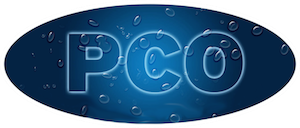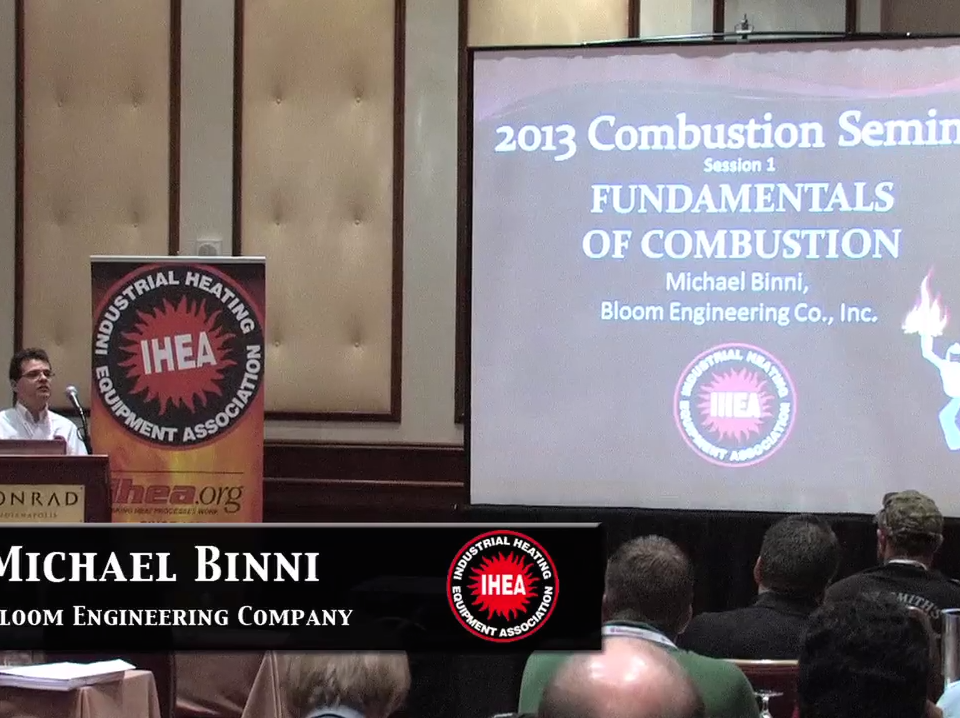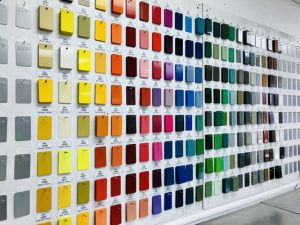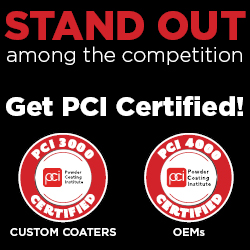In this article, you’ll learn powder coating masking considerations. Every powder coating job will probably require at least one and maybe several different masking techniques.
The purpose of masking in powder coating, put simply, is to keep the powder from reaching certain areas of the item being coated.
When powder coating, it is important to mask off certain areas of certain things. Powder coating is a thicker coating than most paints and if you don’t mask certain areas, things might not go back together when your done. You can also use masking techniques to make designs, logos, and words on the things you are powder coating for a different look. Masking techniques and supplies are not all standardized, sometimes you have to get creative.
But, there are some basics to know. The following methods are of the most popular in use today.
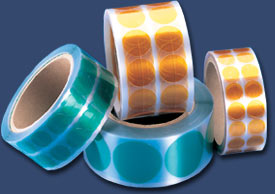 Tapes and discs…high-temperature and heat resistant polyester tape is the most common masking technique. Tapes come in many different sizes from 1/4 inch to 2 inches wide. Whether pre-cut to the desired size and shape or purchased by the roll, tapes are a cost effective way to mask most parts. Included in this category are the high-temp tape dots (discs). Caution should be taken in the selection of the adhesive material that the tape is made of. During the baking process the tape’s adhesive may also be baked on leaving an undesirable gummy surface that would require a post cleaning operation.
Tapes and discs…high-temperature and heat resistant polyester tape is the most common masking technique. Tapes come in many different sizes from 1/4 inch to 2 inches wide. Whether pre-cut to the desired size and shape or purchased by the roll, tapes are a cost effective way to mask most parts. Included in this category are the high-temp tape dots (discs). Caution should be taken in the selection of the adhesive material that the tape is made of. During the baking process the tape’s adhesive may also be baked on leaving an undesirable gummy surface that would require a post cleaning operation.
![]() Silicone Plugs… are little cone shaped pieces that fit in various sized holes. Caps and plugs commercially available in a variety of shapes and sizes that will withstand post bake temperatures up to 600 degrees. If you need more specialized plugs, try EPSI .com. They have the largest selection of masking supplies in the industry.
Silicone Plugs… are little cone shaped pieces that fit in various sized holes. Caps and plugs commercially available in a variety of shapes and sizes that will withstand post bake temperatures up to 600 degrees. If you need more specialized plugs, try EPSI .com. They have the largest selection of masking supplies in the industry.
Silicone Caps are the opposite of plugs: caps are designed to fit over studs
Racking system…the design and configuration of the racking system can often serve as a masking device.
Air mask…a low pressure blast of air can remove powder that is electrostatically attracted to the ambient surface. This process must be accomplished prior to the baking cycle.
Vacuum masking…can be accomplished in much the same manner as the air method described above. The advantages of this method are a cleaner process and a sharper break line.
Foil wrap…can hide the surfaces that do not require coating. This application is desirable on many large surfaces that would be difficult and timely to tape.
Other materials have been used such a silicone rubber, wood, cardboard, magnets, spray on anti-stick compounds, brush-on compounds, high temperature grease, hot and cold dip plastisols, and a variety of others.
***Here is a great article from Powder Coating, The Complete Guide that has great advice on masking techniques for tight tolerance situations, electrical components masking, “structural mating surfaces” and gasket surfaces. Plus, the article has more information on the different masking products you can choose from. Check out Masking Part 1 and Masking Part II.
